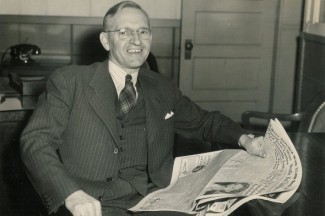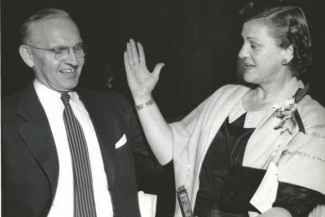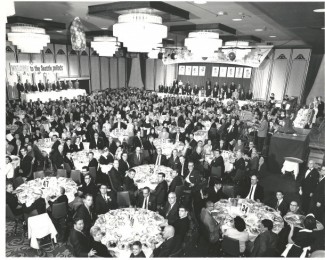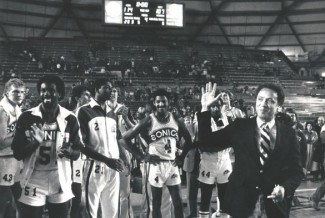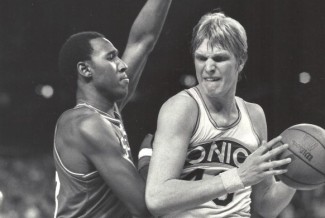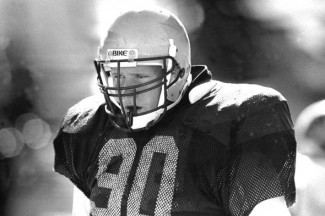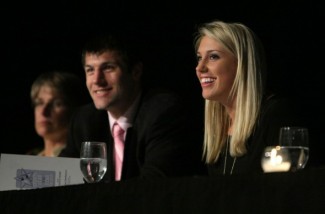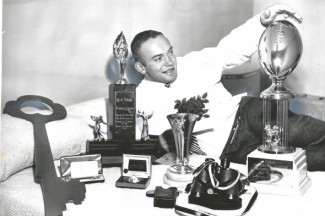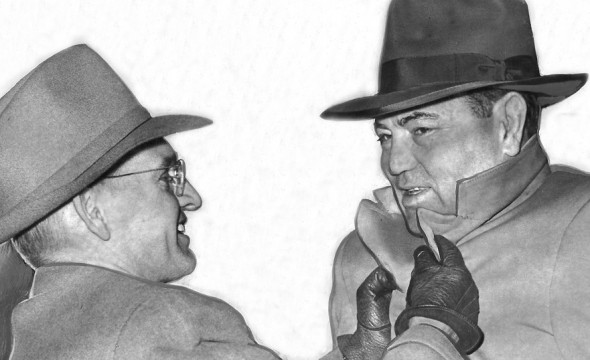
Over the past several weeks, David Eskenazi’s Wayback Machine has focused on the Sports Star of the Year awards, an annual event created by former Seattle Post Intelligencer sports columnist/editor Royal Brougham in 1936 to honor the 1935 Man of the Year.
Since then, the awards program has undergone numerous format changes, most significantly, renaming the “Man of the Year” the “Sports Star of the Year” in 1977; the addition of a separate voting category for women in 1994; and the creation of several new categories in 2009, after the Seattle Post Intelligencer ceased publication.
The following are quick links to each of the Wayback Machine articles on the awards program, in the order in which they were published:
A Seattle institution now in its 77th year, the Star of the Year sports award program started with a simple question posed by Royal Brougham in his popular Seattle Post-Intelligencer column, The Morning After, on Feb. 23, 1936.
Who, Brougham queried his readers, was the Man of the Year in local athletics in the past 12-month period?
Employed at the newspaper since 1916, and a hunt-and-peck typist who used a Remington older than he was, Brougham listed a dozen sports personalities from 1935 that, in his view, merited consideration, and asked readers to provide feedback. READ MORE.
Royal Brougham launched the Man of the Year program in 1936 with the intent of saluting outstanding athletic achievement in the Seattle area in 1935.
To get the process started, Brougham, in one of his Morning After columns in the Seattle Post-Intelligencer, requested readers submit nominations to help him determine the candidates.
In March 1936, Brougham assembled several cronies to sort through the nominations and declare a winner from a list of 12. Brougham and his panel, which he came to call The Supreme Court, settled on football/basketball referee Bobby Morris as the first winner. READ MORE.
For the amusement of his audiences, Brougham enjoyed spicing his annual Olympic Hotel clambake with skits and vaudeville acts.
One year, Brougham attached a pair of dummy ducks to a wire that had been rigged across the ceiling of the Olympics Grand Ballroom.
The plan called for Joshua Green, then an antique Puget Sound shipping icon, to raise a shotgun and wait until the ducks had been released, at which point Green would fire two blanks at them. READ MORE.
In the decades before Seattle became a major league sports city, the Man of the Year sports awards program mostly featured amateurs, the nominees including badminton players (1937, 1939), conservationists (1944, 1945), playfield operators (1947, 1948), an archer (1943), a squash athlete (1948), even a Labrador retriever (1952).
The first winner, Bobby Morris in 1935, was a football/basketball referee.
Through the years, lots of University of Washington athletes and coaches won, as did several golfers and two high school administrators. One year (1954), a trapshooter (Arnold Riegger) became Man of the Year. READ MORE.
With major pro sports Sonics, Seahawks, Mariners entrenched in Seattle, and the Star of the Year program having become a popularity contest decided by banquet attendees who had the power of the vote, amateur athletes, except for University of Washington football players, and women had little opportunity to win.
The female nominees included the recipients of a combined 10 Olympic medals, the winners of three international marathons, a world figure skating champion and an NCAA gymnastics champion but it didnt make a difference.
Five Seahawks won Star of the Year awards in the 1980s. READ MORE.
Between 1935 and 1971, only six women received Man/Star of the Year awards, and one of the six, swimmer Lynn Colella, shared it with her younger brother, Rick.
From Colellas 1971 award through 1994, not a single woman won, although dozens were nominated, including synchronized swimmer Tracie Ruiz-Conforto a record four times in the 1980s.
The major obstacle faced by deserving female (and amateur) athletes: they simply couldnt win what had become a popularity contest when pitted against high-profile professionals, or even University of Washington football players.
Thus, numerous gifted female athletes found themselves shut out. READ MORE.
When banquet goers arrived at the Westin Seattle Hotel for the Sports Star of the Year awards in January 2009 to select winners for 2008, most assumed they were attending the final edition of what, over seven decades, had evolved into a civic institution.
With the Post-Intelligencer awash in red ink and six weeks away from ceasing publication, even the newspaper assumed the worst.
Barring an unexpected turn, the Sports Star tradition, born in 1935 as the brainchild of legendary P-I sports editor Royal Brougham, likely saw its final chapter, the P-I wrote the day after the 74th ceremony. READ MORE.
The athletic careers of pro bowler Johnny Guenther, hydroplane driver Billy Schumacher, thoroughbred jockey Gary Baze, synchronized swimmer Traci Ruiz and rower Anna Mickelson Cummins collectively spanned more than six decades. All have one thing in common besides entering Halls of Fame in their various sports: Each received four Man or Star of the Year nominations and none won.
Guenther didnt even make the ballot the year (1972) he won the biggest event in his sport, the PBA National Championship. Baze didn’t win despite riding five Longacres Mile champions. Ruizs 41 gold medals in an array international competitions got her into the International Swimming Hall of Fame (1993), but no Star of the Year plaque. READ MORE.
——————————————
Many of the historic images published on Sportspress Northwest are provided by resident Northwest sports history aficionado David Eskenazi. Check out Davids Wayback Machine Archive. David can be reached at (206) 441-1900, or at seattlesportshistory@gmail.com

